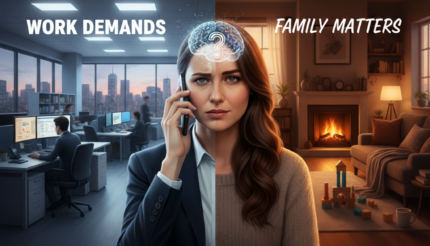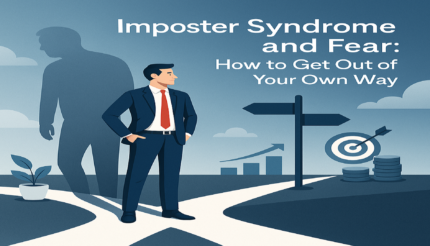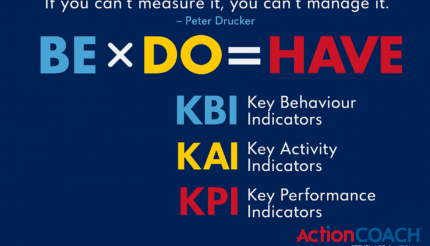Your brain sees what you tell it to find.
That’s not mysticism. It’s neuroscience.
You’ve probably heard people talk about manifestation, the Law of Attraction, or getting what you think about. Some dismiss it as wishful thinking. Others swear it changed their lives.
Strip away the mystical language and you’ll find something more practical underneath.
Your brain processes approximately 11 million bits of sensory information every second. Your conscious mind can handle about 40 to 50 bits.
That’s a massive gap.
So your brain uses a filter called the Reticular Activating System, or RAS. This system decides what information reaches your conscious awareness and what gets ignored. It prioritises based on what you’ve signalled as important.
Goals. Threats. Desires. Problems.
Whatever you focus on, your RAS highlights. Everything else fades into background noise.
The Red Car Effect
Buy a red car and suddenly you see red cars everywhere.
They were always there. You just weren’t looking for them.
The same mechanism applies to opportunities, connections, and resources. When you set a clear goal, your brain starts scanning for anything relevant. A conversation at a networking event. An article that mentions exactly what you need. A chance encounter that opens a door.
Most people call this luck or coincidence.
But luck favors the prepared mind, as Louis Pasteur observed. Serendipity isn’t passive. It’s the result of focused attention combined with readiness to act.
Your brain is doing pattern recognition at a level you can’t consciously track. When you prime it with specific objectives, it connects dots you’d otherwise miss.
Energy Follows Attention
Here’s where belief shapes behaviour.
If you focus on problems, your brain amplifies threats. You notice every obstacle. You anticipate failure. That fear influences your decisions, making you hesitant and defensive.
If you focus on solutions, your brain highlights possibilities. You ask better questions. You take calculated risks. You project confidence that changes how others respond to you.
Research on visualisation confirms this. Students who visualised the process of studying scored 8 points higher on exams than control groups. More importantly, they scored 6 points higher than students who only visualised the outcome of getting an A grade.
Imagining the victorious result felt good but didn’t change behaviour. Mentally rehearsing the actions created actual performance gains.
Your thoughts don’t magically rearrange reality. But they do rewire your attention, which changes what you notice, how you behave, and ultimately what results you create.
The Practical Framework
So how do you apply this without slipping into magical thinking?
First, define what you want with specificity. Vague goals produce vague results. “I want to grow my business” gives your RAS nothing to work with. “I want to add three new clients in Q2 generating £15,000 in revenue” creates a clear target.
Second, visualise the process daily. Not the trophy. The work. See yourself making the calls, refining the pitch, following up consistently. This mental rehearsal primes your brain to recognise opportunities and execute when they appear.
Third, take consistent micro-actions. Visualisation without action is daydreaming. Your RAS responds to what you demonstrate as important through behaviour, not just intention. Small daily steps signal commitment.
Fourth, stay open to how opportunities arrive. They rarely show up exactly as you imagined. The prepared mind recognises value in unexpected forms.
When Pattern Recognition Gets Eerie
I experienced this recently in a way that felt almost uncanny.
I was working with a client on personality profiling. We discussed different frameworks, including Nigel Risner’s animal-based system that categorises people as lions, elephants, monkeys, or dolphins.
Hours later, I’m sitting in traffic. The car in front of me has a distinctive licence plate.
It’s Nigel Risner.
Of all the roads, at that exact moment, after spending the morning talking about his work.
My first thought was about manifestation. Then I caught myself.
I’d been thinking about personality frameworks all morning. My RAS was primed. I noticed the licence plate because my brain was actively scanning for related patterns. Had I not been focused on that topic, I might have glanced at the plate and registered nothing.
The coincidence wasn’t mystical. It was cognitive.
But here’s what matters: that heightened awareness creates real value. It makes you notice connections, remember conversations, and spot opportunities that others miss entirely.
What This Means For Your Goals
You don’t get what you think about through cosmic intervention.
You get it because focused attention changes what you notice, how you behave, and what actions you take. Your brain becomes a filtering system aligned with your objectives.
The question isn’t whether this works. The mechanism is established neuroscience.
The question is what you’re training your brain to find.
Because right now, whether you realise it or not, your RAS is highlighting something. It’s filtering your reality based on what you’ve consciously or unconsciously marked as important.
If you haven’t deliberately set that filter, it’s running on default programming. Old fears. Reactive patterns. Whatever captured your attention most recently.
But you can reset it.
Define your target. Visualise the process. Take action daily. Stay alert to opportunity.
Then watch as your brain starts showing you what was there all along.





